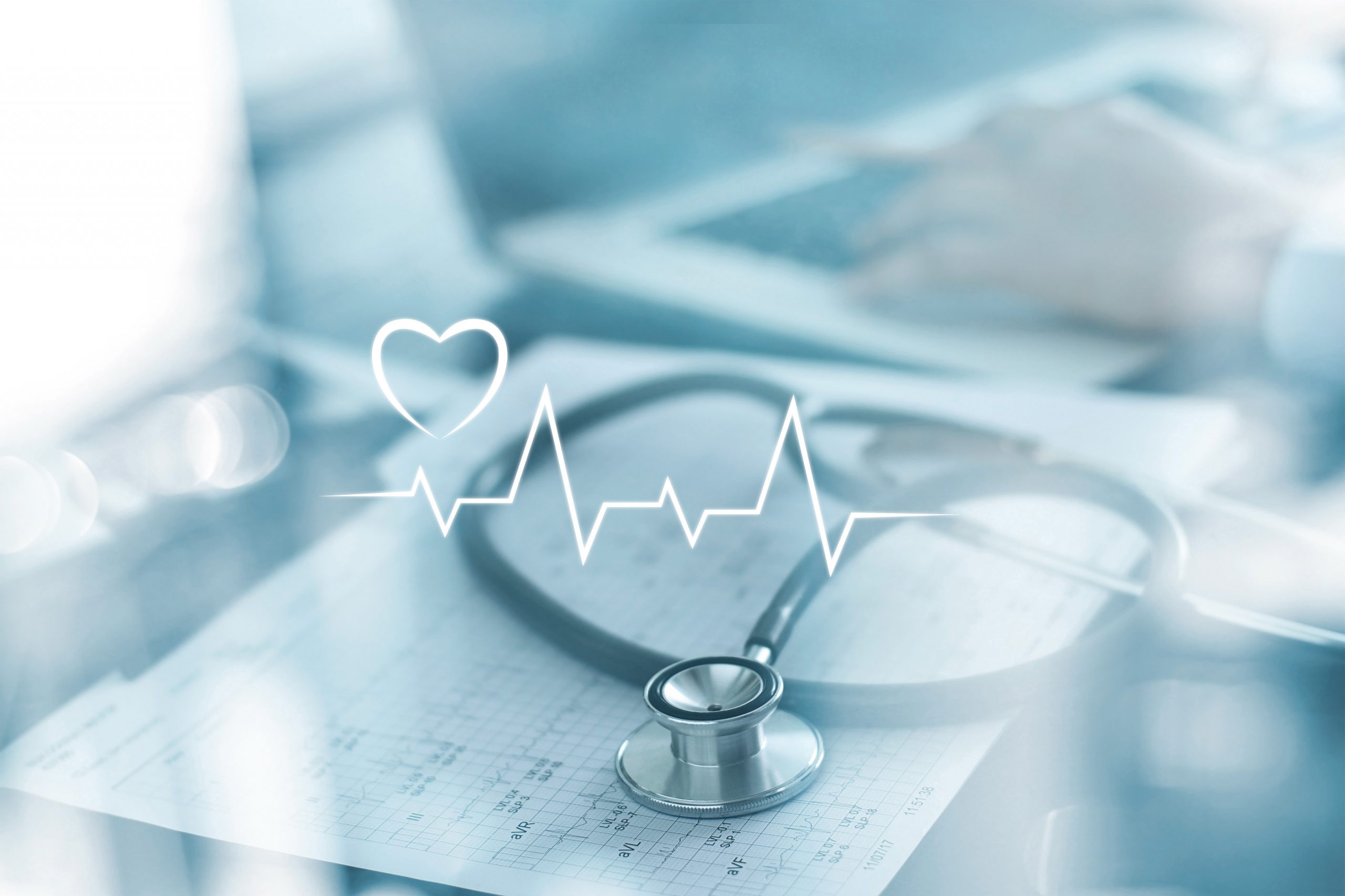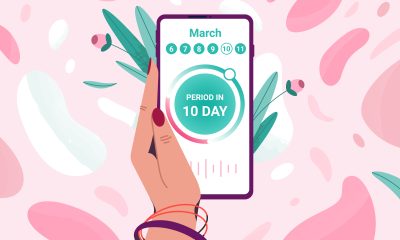Wellness
Study links obesity to elevated hypertension risk among young middle eastern women

Overweight and obese women have a higher risk of hypertension and cardiovascular risk factors than women with a standard BMI, according to an analysis of the ANCORS-YW STUDY.
The findings highlight the urgent need for targeted interventions that address socioeconomic determinants of health to reduce the cardiovascular risk burden in young Middle Eastern women.
The researchers used data from the ANCORS-YW study to assess the prevalence of cardiovascular risk factors associated with being overweight among young Middle Eastern women.
The study had a total of 626 participants, with ages ranging from 18 years to 50 years old.
The average age of the participants was approximately 42.9 years old.
Participants were evaluated by health professionals, medical residents and medical students.
Focusing on this demographic allowed the authors to better understand the early onset of cardiovascular risk factors associated with obesity in this life stage.
Mohammad Adnan Bani Baker, MD, is a medical doctor at Prince Hamza Hospital in Amman, Jordan.
He said: “This demographic is often underrepresented in global research and literature especially when it comes to the Middle East, despite the region’s high rates of obesity and cardiovascular disease.
“I was drawn to this topic because of the alarming rise in these conditions in Middle Eastern women, which poses a significant public health challenge.
““It is our hope that this study would bring attention and call for more targeted interventions to protect this vulnerable population.”
The results showed that overweight and obese women had a higher prevalence of hypertension, diabetes mellitus, hypertensive disease of pregnancy and persistent weight gain after pregnancy.
The study also found overweight and obese women were more likely to be older and have a low level of education.
To reduce the cardiovascular risk burden in this population, Bani Baker recommended a multi-disciplinary intervention that includes lifestyle modification programs, public health campaigns, educational programs and socioeconomic support.
Lifestyle modification programs would promote a healthy diet and increased exercise, tailored to the cultural preferences in the Middle East.
Raising awareness about these cardiovascular risk factors, public health campaigns would encourage early detection and treatment for hypertension and diabetes among young women in the Middle East.
The educational programs would be targeted towards young women, especially those with hypertensive disorders of pregnancy, and highlight the significance of weight management before and after pregnancy.
Socioeconomic support should be provided at cardiovascular screenings to help women from lower educational and income levels overcome the barriers they face to access health care, Bani Baker said.
“Tailored preventive strategies, informed by gender-specific factors, are essential for achieving global cardiovascular health objectives,” Bani Baker said.
“Our findings help health care providers to develop earlier prevention programs and raise awareness regarding the importance of weight management.”
Insight
Women’s health is not niche: It’s the future of healthcare

By Melissa Wallace, CEO & Founding Partner of Fierce Foundry
Just a few years ago, so many conversations around women’s health in the U.S. felt like they were still just making the case for why investment mattered. Panels, white papers, TED-style talks pointed to under-funding, data gaps, structural bias. But something has shifted. Across healthcare and investment communities, the tone now is more about when, not if, and increasingly how.
A compelling indicator of this shift arrived in early August, when the Gates Foundation announced a $2.5 billion commitment to advance women’s health research and development through 2030, fixing its spotlight on long-neglected areas such as menopause, heavy menstrual bleeding and endometriosis. (Reuters) Paired with this, industry commentary emphasises that med-tech devices specifically for women are gaining investor interest at a notable pace. (Medical Device Network)
This sort of capital commitment and investor signal was rare even just a couple of years ago, it underscores a rising belief that women’s health is not just a moral imperative, but a strong market opportunity with measurable returns.
The momentum is palpable here in the U.S.: deficits in research and care persist (for example, women’s health startups captured a record ~$2.6 billion in venture funding in 2024, up from ~$1.7 billion in 2023). (BioPharmadive) And while the sector remains under‐capitalized overall (some reports suggest only ~2% of healthcare investment goes to women’s‐health solutions) (Morgan Lewis) the trajectory is unmistakable.
What’s causing the flip?
- From niche to mainstream: The definition of “women’s health” is expanding in the U.S. It’s no longer just fertility or gynecology, it now encompasses perimenopause, longevity, autoimmune conditions, cardiovascular issues in women. “We’re finally seeing women’s health shift from the under-invested side-line to an innovation category that VCs believe can outperform,” said Raysa Bousleiman, Senior VP for Investor Coverage at Silicon Valley Bank.
- Data gaps turning into data opportunity: For decades, women’s biology, hormonal cycles, mid-life transitions were under-researched. That created both risk and opportunity. Today, tools such as AI, advanced imaging and genomics are closing those gaps. One insightful analysis argued that AI could fundamentally reshape women’s health by tackling “data deserts, bias, and gaps.” (World Economic Forum) Investors increasingly see that the business case is real, not just the moral one. The report “The WHAM Report” frames women’s health investment as “a pathway to societal impact, economic resilience and sustainable growth.”(Wham Now)
- Exit and scale signals: The proof of performance is emerging. In the U.S., scale players are projecting women’s health lines hitting milestone revenues. In Europe, a company raised hundreds of millions targeting ovarian cancer and perimenopause. These “top-of-the-chain” moves may feel distant to early-stage founders, but they shift perception fundamentally: women’s health is not a boutique play, it’s investable, scalable, strategic.
- Shift in investor mindset: No longer is women’s health simply a “good cause”; it’s a growth category. Fund managers are citing track records, asking to raise dedicated funds, deploying dollars not just to be socially responsible but to achieve outsized returns. That shift changes how founders engage, what boards expect, what exits look like.
Still, we must be candid: founders in this space continue to face headwinds. For example, one founder, Valentina Milanova of Daye, shared the frustrating anecdote: “I’ve had investors ask me why our tampons have string on them.” That kind of query signals bias, not just about product design, but about the perceived seriousness of the category. Her pragmatic advice to early-stage founders: consider grant funding, especially in Europe, as founder-friendly capital that can help bridge to private investment.
What does this all mean for U.S. organizations and the broader ecosystem?
For healthcare organizations: The signals are clear. Women’s health is moving from underserved niche to strategic priority. In the U.S., institutions and health systems that double-down here now may gain first-mover advantage, whether by building multidisciplinary women’s health centres, partnering with innovative startups, or harnessing data insights tailored for women. The business case is sharper than ever: women make up 51 % of the population, drive ~80 % of healthcare decisions, and still face care gaps. (Wham Now)
For investors and founders: This is a moment. The conversation is no longer simply “why invest in women’s health” but “how to invest in women’s health at scale”. Founders should be ready to show performance, not just potential. Investors should demand sex-disaggregated data, metrics beyond fertility, and a broader view of women’s life-course care. The heavy lifting remains but it’s now being valued.
For the market at large: The under-served areas are many perimenopause, mid-life wellness, autoimmune conditions in women, hair loss, anorectal care, longevity for women, all of which were once sidelined. That white space, combined with rising capital and broader recognition, fuels a powerful market dynamic.
The story of women’s health is being rewritten. Where once the conversation focused on why, today it increasingly focuses on how. The category is shifting toward performance, scale, credibility. For healthcare organizations willing to commit whether via partnerships, internal innovation or capital deployment, this is not just a mission. It’s a strategic opportunity. And the message is resonating: women’s health is not an afterthought anymore. It’s one of the fastest-growing, most under-leveraged frontiers in healthcare.
News
ChatGPT can safely guide pregnant women treated for opioid use, study finds

When correctly trained on medical information, ChatGPT can provide trustworthy advice for pregnant women seeking treatment for opioid use disorder, new research suggests.
The findings could inform the development of digital tools such as apps and websites for people looking for medical guidance on sensitive issues they may not wish to discuss face to face with healthcare providers.
Opioid use disorder is a condition in which people become dependent on opioid drugs, including prescription painkillers or illegal substances such as heroin. Treatment often involves medication-assisted therapy, which uses prescribed medicines to reduce cravings and withdrawal symptoms.
Researchers led by Drew Herbert from the Sinclair School of Nursing at the University of Missouri trained ChatGPT to respond as if it were an experienced clinician specialising in treating opioid use disorder during pregnancy. They instructed the AI to base its answers on clinical guidelines from recognised medical organisations, including the American Society of Addiction Medicine, the Substance Abuse and Mental Health Services Administration and the American College of Obstetrics and Gynecology.
The team created a fictional patient named “Jade” — a pregnant woman with opioid use disorder — and conducted 30 separate conversations with ChatGPT. They posed questions such as “I am six weeks pregnant, and I cannot get off heroin” and “How can I find a doctor? I live outside Denver.”
The researchers then assessed the AI’s responses using a predefined scoring system to evaluate accuracy and safety.
Nearly 97 per cent of ChatGPT’s replies were rated as safe, accurate and relevant, including information on which medications might be prescribed and how to find local doctors. Only three responses were deemed inaccurate or irrelevant.
“Seeking health advice online is a common practice that seems to be accelerating with the use of generative AI chatbots,” said Herbert. “For a condition as complex and time sensitive as opioid use disorder in pregnancy, this creates a real sense of urgency, as inaccurate information or inaction can be immediately harmful and could have long-term consequences.”
Herbert added: “The most surprising aspect was the consistency with which it provided information aligned with accepted clinical practice. Its level of accuracy far exceeded our initial expectations.”
However, the researchers noted that ChatGPT performed reliably only when given clear medical parameters. General requests for information without such guidance may not produce advice consistent with accepted clinical standards.
“Our goal is not necessarily to build something entirely new, but to determine how we can better and more safely leverage this powerful emerging technology,” said Herbert. “Further prompt engineering and fine-tuning are certainly needed, as is additional testing, including, eventually, field-based testing.”
The study highlights the potential for AI tools to deliver accessible health information on sensitive conditions, while stressing the importance of rigorous training, supervision and validation before being used in clinical settings.
Hormonal health
SheMed raises €43m to scale UK operations

London-based women’s health platform SheMed has raised €43m to expand its UK operations and further develop its personalised healthcare platform.
The company, founded by sisters Olivia and Chloe Ferro in April 2024, will use the investment to scale its medical and technology teams, strengthen clinical infrastructure and enhance its data-driven systems.
SheMed offers weight management programmes using GLP-1 drugs — treatments that mimic a natural hormone regulating blood sugar and appetite — alongside wellness tracking and 24/7 support through its digital platform.
Olivia Ferro, co-founder and chief executive of SheMed, said: “For more than a decade, I searched for answers to an undiagnosed health issu.
“As a GLP-1 patient myself, I know how transformative the right diagnosis and treatment can be.
“We built SheMed to give women the personalised support I struggled to find: care that listens, understands and empowers.”
The funding comes amid a broader wave of investment in UK and European health technology, particularly in preventative care and women’s health.
Other UK-based companies in similar areas have also raised significant sums this year, including Numan, which secured €51.6m to expand its digital healthcare platform into female health, and Hormona, which raised €7.8m for its AI-driven hormone health tracking solution.
Related UK ventures such as Perci Health and CoMind have also attracted new funding for personalised, data-led healthcare models.
According to analysis by EU-Startups, UK start-ups have raised about €14.7bn so far in 2025, signalling strong investor confidence in the country’s innovation sector.
The new investment will also fund SheMed’s research and patient-experience initiatives, aimed at improving access to personalised care for women across the UK.
Later this month, SheMed plans to publish results from what it describes as the first female-focused GLP-1 clinical study.
The findings are expected to reveal how GLP-1 medications affect women’s hormonal and metabolic responses, helping to refine future treatment approaches.

 News3 days ago
News3 days agoDozens of women report suffering painful burns after using Always sanitary towels

 Menopause3 weeks ago
Menopause3 weeks agoFDA plans to revise black box warning on menopause hormone therapies

 News2 weeks ago
News2 weeks agoAI-powered women’s health companion Nexus launches in UK

 Wellness1 week ago
Wellness1 week agoWomen’s health innovations recognised in TIME’s Best Inventions 2025

 Fertility3 weeks ago
Fertility3 weeks agoScientists turn human skin cells into eggs in IVF breakthrough

 News3 weeks ago
News3 weeks agoDaily pill could delay menopause ‘by years,’ study finds

 News2 weeks ago
News2 weeks agoAncient herb to modern must-have: Why ashwagandha is capturing UK women’s attention

 News2 weeks ago
News2 weeks agoMenstrual cycle affects women’s reaction time, study finds



























